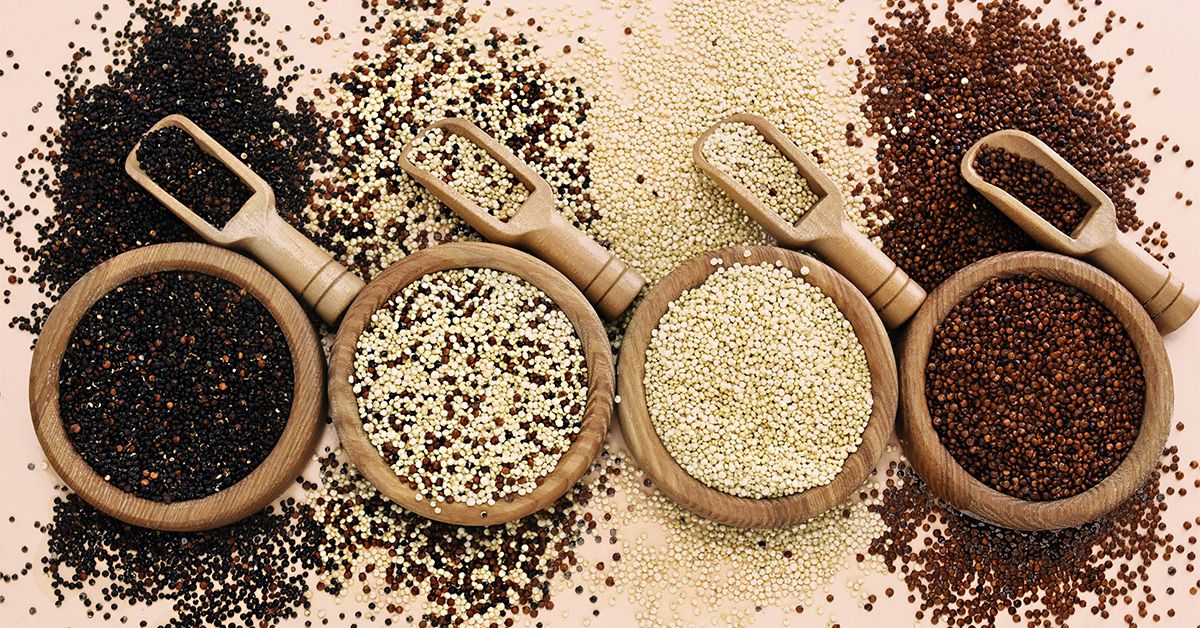- A new study suggests ancient grain consumption is associated with improved health outcomes for people with type 2 diabetes.
- Ancient grains like oats are rich in dietary fiber and phytochemicals that may help manage blood sugar and cholesterol.
- Experts recommend incorporating minimally refined grains into a healthy, balanced diet to reap the most benefits.
A new study highlights the potential benefits of including ancient grains in dietary patterns for people with diabetes.
Ancient grains, known for their lack of genetic modification and higher levels of beneficial phytochemicals and fibers, may offer a promising avenue for dietary intervention.
This new analysis of 29 randomized controlled trials suggests ancient grains like oats, brown rice, and millet may produce positive diabetes health outcomes, with particular benefits observed in blood sugar and cholesterol profiles.
However, the study also points to the need for further research, given the variability and limitations of the data reviewed.
The findings, published in Nutrition, Metabolism and Cardiovascular Diseases, underscore the importance of dietary choices in diabetes management alongside traditional medical treatments.
In this systematic review and meta-analysis, researchers assessed the effectiveness of various types of ancient grains in managing diabetes.
The review included 29 randomized controlled trials, of which 13 were meta-analyzed.
The studies involved a total of 1,809 participants, with a slightly higher proportion of males (55.2%) and an average age of around 56. The majority of participants had type 2 diabetes, with only one study including individuals with type 1 diabetes.
On average, participants had been living with diabetes for approximately 14 years, with many managing their condition with oral medications or a combination of oral medications and insulin injections.
All included studies looked at cardiovascular risk factors such as body weight, blood sugar, and cholesterol, with varying significant outcomes. However, they didn’t address other vital diabetes management aspects, like patient satisfaction, overall well-being, and the cost-effectiveness of using ancient grains in diabetes treatment.
The studies included in the analysis most commonly examined the effects of oats, brown rice, buckwheat, or chia seeds on diabetes. Notably, only a fraction of the studies (24%) used whole, unrefined grains in their research.
Using specialized software, the researchers combined and analyzed the studies’ diverse data to identify consistent trends in the impact of ancient grains on diabetes health outcomes.
In the comprehensive analysis, the vast majority of studies (96.5%) suggested a positive effect of ancient grain consumption on various diabetes markers, including insulin levels, hemoglobin A1c, fasting blood glucose, and cholesterol levels.
Of the studied ancient grains, oats stood out for their potential to significantly improve cholesterol and fasting blood glucose levels in individuals with type 2 diabetes, which is supported by previous research.
Brown rice also showed beneficial effects, particularly on HbA1c and body mass index (BMI), but not on other blood sugar and cholesterol markers, which is partially aligned with previous research, according to the study authors.
Also of note, millets showed a significant effect on body weight, however, the study authors recommend interpreting this finding with caution due to potentially confounding factors in the included studies.
Conversely, despite their known health benefits, chia seeds did not demonstrate a significant influence on diabetes markers in this meta-analysis, possibly due to the small sample sizes involved.
The study found that ancient grains might benefit those with type 2 diabetes, but the results may not be entirely reliable due to the variability of the studies. The authors call for more standardized, in-depth research on ancient grains for diabetes management.
Medical News Today spoke with Avantika Waring, MD, a board-certified physician in endocrinology, diabetes, and metabolism, and chief medical officer at 9amHealth, not involved in the study, about how ancient grains may improve diabetes health outcomes.
Waring explained:
“There are a variety of phytochemicals in whole, ancient grains including flavonoids and phenolic acids (antioxidant, anti-inflammatory properties) and phytosterols (heart healthy and improve the lipid profile) that can improve overall metabolic health and improve blood glucose and cholesterol management in type 2 diabetes.”
She also noted that “the hearty bran layer around the outside of an unprocessed whole grain breaks down slowly therefore preventing spikes in blood sugars which can also help improve diabetes management”.
Eliza Whitaker, a registered dietitian and medical nutrition advisor at Dietitian Insights, who was not involved in the study, also spoke to MNT about potential mechanisms at play in the study’s findings.
She highlighted the role of oxidative stress in the progression of diabetes and further explained that the specific “phytochemicals such as phytosterols, lignans, flavonoids, and carotenoids found in ancient grains have anti-inflammatory properties that can mitigate [this] oxidative stress.”
Compared to modern grain varieties that were mainly cultivated after the 1960s, ancient grains have undergone less genetic modification and are typically reported to have superior nutritional composition and kernel quality.
Specifically, ancient grains tend to contain higher levels of certain phytochemicals and dietary fiber, which are associated with potential health benefits related to insulin sensitivity, glucose metabolism, and overall blood sugar control.
Still, research directly comparing the impacts of ancient versus modern grains on diabetes health outcomes is limited. Both types can be consumed in minimally processed forms to preserve their nutritional composition and potential benefits.
Waring and Whitaker agreed that ancient grains are safe and likely beneficial for most people with type 2 diabetes to consume in regular portions and as part of a balanced diet.
“People with type 1 diabetes can also eat ancient grains, and they can work with their healthcare provider to adjust their insulin to manage any rise in blood sugars that occurs when consuming carbohydrates,” added Waring.
However, both experts strongly recommend prioritizing minimally refined grains, like oats and chia seeds, over more refined grains, like bread, pasta, or cereal, which likely don’t provide the same benefits.
“Regardless of what type of foods you prefer, covering half the plate with green veggies, quarter with lean protein (can be plant-based like beans or tofu), and a quarter with whole grains is a balanced approach,” said Waring.
When asked whether people with diabetes should opt for a diet rich in ancient grains, which are higher in carbs, versus a diet low in carbs for optimal blood sugar management, Waring concluded:
“While ancient grains and any whole grains can increase the blood sugar levels in a person with diabetes, the higher fiber levels, especially when paired with healthy fats as part of a meal, help minimize blood sugar spikes. Low carb diets are one way to keep blood sugars consistently low, however these are typically not sustainable in the long term, and when you eliminate grains from your diet, you’ll miss out on the fiber, phytochemicals, and plant-based fats that we know promote heart health and longevity.”



